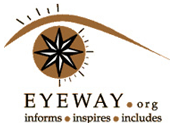Louis Braille, the developer of Braille Code, was born on January 4 in 1809. The day is celebrated as World Braille Day.
An educator from France who had accidentally lost his eyesight at the age of three, Braille, invented a set of symbols in the shape of raised dots on paper that could be used as alternatives to English alphabets. At the age of 15, Braille developed his namesake code which is still used as a language system for the visually challenged.
On the 206th birth anniversary of Louis Braille, we bring to you some facts about the Braille Code:
1. The Braille Code is often mistaken as a different language. It is actually an alternate of alphabets that can be used in any language. Instead of characters, the Braille Code consists of raised dots on paper.
2. Louis Braille also developed a set of alphabets for music notations. At present, almost every of language, including Computer languages, has Braille versions.
3. Braille was inspired by French army officer, Charles Barbier de la Serre's design of 'Ecriture Nocturne', which was a system of night writing, developed in response to Emperor Nepoleon's demand.
4. People use slates and stylus for writing in Braille. The writing technique remains the same as writing in print on paper.
5. The World Blind Union is campaigning for The Marrakesh Treaty, this year. Also known as the Right to Read Campaign, the treaty would ensure that international copyright laws include reading materials in accessible formats for visually challenged individuals. Currently, only 1 to 7 percent of the world's published books are available in Braille.
6. Currently, the Braille system is taught in three different grades. Grade 1 teaches people the usual 26 alphabets in the English language and punctuation. At Grade 2, the space between dotted letters is reduced to save paper.
7. Braille Code has been the most utilised form of alternate media in the world. The system caters to a large part of the world's population. According to a report of the World Health Organisation in 2014, a total of 285 million people in the world are visually impaired. Of them, 39 million are completely blind and 246 million are considered to have low visual sensibility. Around 65 percent of all people who are visually impaired are aged 50 and above. Around 19 million children are visually impaired, with 1.4 million being irreversibly blind for life.
8. In America, there is an alert system for visually challenged people. 'Braille for feet', a design developed by Tilco Vanguard, came into existence to meet the business standards set by the Americans with Disabilities Act. Braille for feet is also known 'truncated domes', which are actually bright yellow strips that help them identify dangerous areas and end of roads.
9. Countries around the world have also taken initiatives to help the Braille users. Mysore has developed India's first visually impaired-friendly railway station with features maps and train schedules in Braille at various points across the station.

Facebook comments